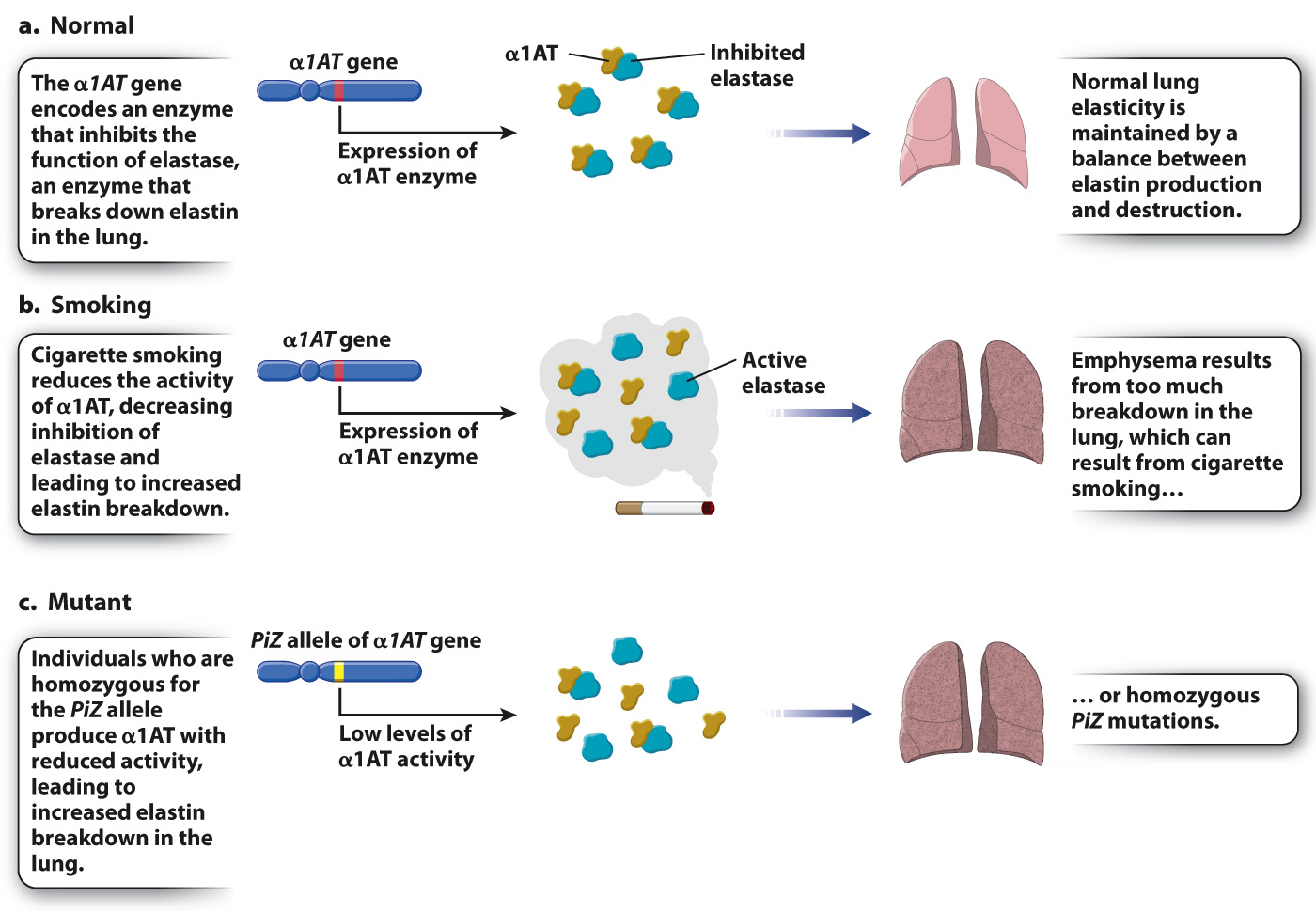Some genetic differences are major risk factors for disease.
As we saw in the last chapter, when a mutation occurs in the coding sequence of a gene, it may have no effect on the amino acid sequence, or it may result in a change in the amino acid sequence, introduce a stop codon, or shift the reading frame. Many of the mutations that alter amino acid sequence are harmful. Harmful mutations are often eliminated in one or a few generations because they decrease the survival and therefore the capacity for reproduction of the individuals that carry them.
Sometimes, however, harmful mutations persist in a population. For example, many polymorphisms increase susceptibility to particular diseases. One such polymorphism increases the risk of emphysema, a condition marked by loss of lung tissue. Emphysema patients suffer from shortness of breath even when at rest, a wheezy cough, and increased blood pressure in the arteries of the lungs. Without proper treatment, the disease progresses to respiratory failure or congestive heart failure, and eventual death. Onset of the disease usually occurs in middle age, and the lifespan of affected individuals is shortened by 10 to 30 years depending on the effect of treatment.
About 80% of all cases of emphysema are associated with cigarette smoking, which affects the action of the enzyme alpha-

While most cases of emphysema are due to smoking, in some individuals genetics plays a role. An individual’s chance of getting emphysema is significantly increased by inheriting a mutation in the gene that encodes α1AT. Among the many different alleles of this gene, a defective allele denoted PiZ is particularly common in populations of European descent. Among Caucasians in the United States, about 1 person in 30 is heterozygous for the PiZ allele, and about 1 in 3000 is homozygous PiZ/PiZ. Individuals with the homozygous genotype produce α1AT with reduced activity and hence have reduced elastase inhibition, leading to severe emphysema and death in more than 70% of affected individuals (Fig. 15.2c). Smoking markedly increases both the severity of the disease and the rapidity of its progression in PiZ/PiZ individuals. The life expectancy of PiZ/PiZ nonsmokers is 65 years, whereas that of PiZ/PiZ smokers is only 40 years.
The combination of homozygous PiZ and smoking is an example of a genotype-